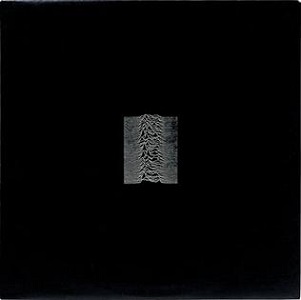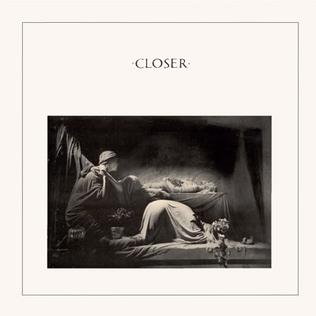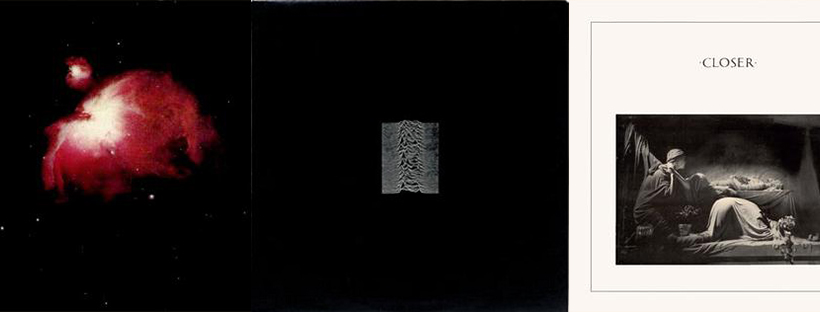Welcome to Behind the Artwork. With this series I want to highlight bands and the designers behind the artwork of their record sleeves. I hope to bring light on the people who create the covers we look at when we listen to music and find out the who, what, when, why, and where of the art. For my first spotlight in this series, I wanted to talk about one of my favorite bands and one of my favorite designers, all in one post.
In late 1970’s Manchester England four men inspired by punk bands like the Sex Pistols, and The Clash formed their own band named Joy Division. The band was under television host Tony Wilson’s recently created record label Factory Records. Tony much like Joy Division was in love with the punk ethos of 1970’s England and adopted this ethos in his record company as well. In everything that factory did it always tried to do it in a “punk” way, and this ethos was no different within the art of the label company.
The art director of Factory Records and Joy Division was Peter Saville, a graduate of Manchester Metropolitan University where he studied graphic design. Peter Saville grew up in Northern England, a very blue-collar type of place, and his greatest view into the avant-garde was through record sleeves. Saville was also inspired by post-modern and pop artists such as Richard Hamilton. Peter Saville met Tony Wilson at a concert and designed the poster for Wilson’s first Factory concert. From then on, Saville was entrusted as Factory’s art director and with that title came the responsibility of creating the artwork for the sleeves of Joy Division
Unknown Pleasures: released on June 15th, 1979.
Original sleeve artwork designed by Peter Saville.
Typography used: None

The post-punk classic Unknown Pleasures was Joy Division’s first LP album. Unknown Pleasures has gone in the history books as one of the best albums of all time as voted on by the music press. Unknown Pleasures is an eerie, somber album with lots of gloomy lyrics creatively written by frontman Ian Curtis. The artwork that wraps this post-punk treat is just as eerie as the music itself. The album cover features no words, only a graphic of a wavey graph. Unlike the rest of Joy Division’s album artwork this one was not originally conceived by Saville himself, but instead was hand-picked by the band themselves. The band showed Saville an image they found from the Cambridge encyclopedia that was of radio readings of pulsar CP 1919. Saville took the original image and inversed the colors for the sleeve. The lack of typography on the cover was also intended as both Saville and the band felt it to be appropriate for the album to only have the wave graph graphic on the front. The band also didn’t want to put pictures of themselves on the cover either, as bassist Peter Hook said in an interview, “We were an ugly bunch of Northern oiks, and why would anybody put our faces on an LP cover?”. The album sleeve itself has gone onto become a cult icon. Its iconic look can be seen on t-shirts, shoes, and tattoos on the bodies of fans around the world.
Closer: released on July 18th, 1980.
Original sleeve artwork designed by Martyn Atkins, and Peter Saville.
Typography used: Custom font designed by Peter Saville

Joy Division’s 1980 follow up Closer was not met without tragedy, as months before the release of the album and days before the band were set to embark on a North American tour, lead singer Ian Curtis tragically took his own life. Peter Saville had already designed the sleeve before he heard the news. Coincidentally, Saville had picked out a photograph of a tomb to put on the sleeve. After Tony Wilson told Saville that Curtis had died Saville told him “We’ve got a tomb on the cover of the album”. While Factory and the surviving members of Joy Division debated on the use of the funeral theme on the sleeve, they decided to go through with the original sleeve as a move of good faith, as Ian himself had originally ok’d the photo on the sleeve before his death. The photo in question is of the Appiani family tomb in Genoa. The photo was originally taken by photographer Bernard Pierre Wolff. The typography used on the front from what I can gather from looking at various message boards was actually taken from a book called “The development of writing”. Peter got the type onto the sleeve from the book by using photomechanical transfers. The typography is in the style of classic roman type.
Joy Division’s time in the world was short but effective. Joy Division and the post-punk musical movement helped define how music was created and displayed for years to come. The dark and ambiguous designs of their graphics and album sleeves helped solidified their spot in music history. Of course, Joy Division’s story does not end after Ian’s passing, as the three remaining members would go on to start the band New Order, and they would bring Peter Saville along with them to be their in-house designer once again. I hope to cover New Order’s artwork in a future Behind the Artwork.
Thank you all so much for reading my first installment of Behind the Artwork. I hope you learned something new today about the wonderful world of graphic design.
Works Cited
“Closer (Joy Division Album).” Wikipedia, Wikimedia Foundation, 16 May 2019, en.wikipedia.org/wiki/Closer_(Joy_Division_album).
Grundy, Gareth. “Peter Saville on His Classic Joy Division and New Order Artwork.” The Guardian, Guardian News and Media, 28 May 2011, www.theguardian.com/music/gallery/2011/may/29/joydivision-neworder.
jimmod123. “Tony Wilson Peter Saville Interview Later with Jools Holland Factory Records Joy Division New Order.” YouTube, YouTube, 21 Aug. 2010, www.youtube.com/watch?v=ne3quiRcOes&t=175s.
Klotz, Eric. “Data Visualization Reinterpreted: The Story of Joy Division’s ‘Unknown Pleasures’ Album Design.” YouTube, YouTube, 17 Oct. 2012, www.youtube.com/watch?v=reEQye0EOAw.
Shaw, David. “Closer.” Rock That Font, 12 June 2010, rockthatfont.com/2010/06/closer/.
Tosq.com. Peter Saville Sleeve Design | Sleeves 1978-1982, petersaville.info/sleeves/1978-1982.html.
“Unknown Pleasures.” Wikipedia, Wikimedia Foundation, 1 June 2019, en.wikipedia.org/wiki/Unknown_Pleasures.
Yahoo. “Backspin: Peter Hook on Joy Division’s ‘Unknown Pleasures’.” YouTube, YouTube, 12 Apr. 2017, www.youtube.com/watch?v=SpqCz3cRLwc.


Thank you Kanye very cool. The descriptions are great and the history is fascinating, but you should go deeper into the design elements to make a more cohesive analysis.